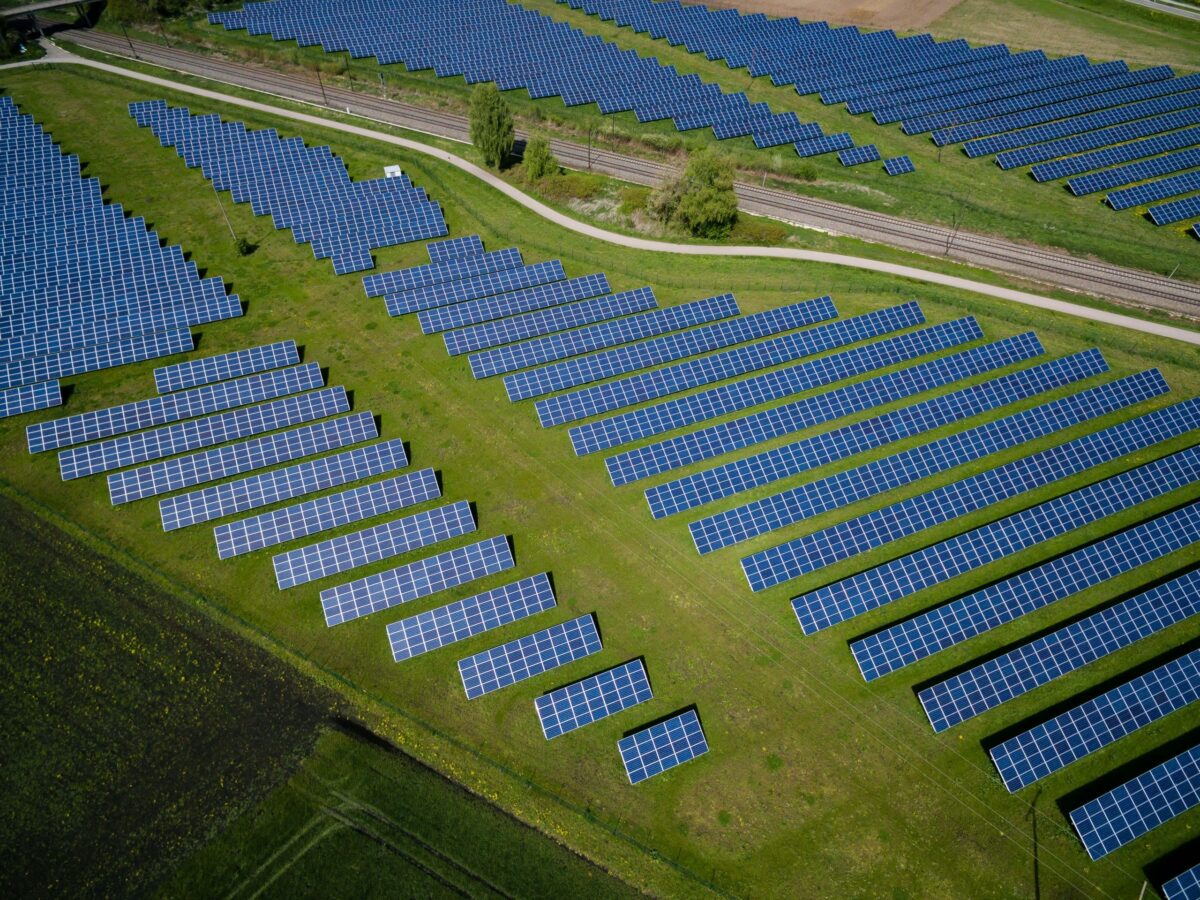New analysis shows that a combination of regulatory and market-based instruments, together with financial and other support schemes, has led to significant progress being made across much of Central and Eastern Europe in phasing out fossil fuels in favour of renewables. ‘Prosumers’—private households with wind and solar installations, in particular play a key role.
A report published this week by Bankwatch, a network of grassroots, environmental and human rights groups across Central and Eastern Europe, suggests that the EU’s Green Deal, and its approach of combining a lift in climate ambition with new financial and other support instruments, has started to change the perception of the CEE region as a laggard when it comes to clean energy transition.
Ahead of two CEE presidencies of the European Council (Hungary and Poland), the new European Commission should now build on this progress and step up its support for the energy transition in CEE countries, the report, which analyses progress made in eight CEE countries (Bulgaria, Czechia, Estonia, Hungary, Latvia, Poland, Romania, Slovakia) over the last five years, argues.
Taking the Green Deal further
The Green Deal is one of the greatest legacies of the current Ursula von der Leyen Commission (2019–24). A firm priority introduced at the inception of the Commission’s term with strong political leadership, it has been followed up with multiple strategies and pieces of legislation. It has given the EU a solid impetus to tackle important environmental challenges such as climate change or biodiversity loss.
However, the Commission’s mandate comes to an end in 2024 with most climate policies adopted. While debate remains about the level of ambition that will eventually have been achieved, the time has come to implement the new standards to make sure the EU’s 2030 climate objectives can be fulfilled.
It will be the task of the incoming Commission to ensure consistent implementation across Europe. Particular focus will need to be on those countries and regions where challenges are higher than elsewhere, due to a higher reliance on fossil fuels or a lack of political support to change.
That is the case in many Central and Eastern European countries. The region is dependent on the EU to advance the climate agenda, with EU policies, funds and other tools instrumental in driving the transition.
EU funds also help to drive policy change thanks to financial support for specific clean energy measures. The post-pandemic recovery fund helped to make some CEE countries commit to phasing out coal by a certain date while providing the funds needed for introducing renewables and improving energy efficiency.
More recent events, particularly the large-scale Russian invasion of Ukraine, also had a major impact on the latest developments in the CEE region, disrupting the energy system.
However, important challenges remain to CEE countries embarking on a lasting energy transition, not the least of which is governments continuing to plan for a high reliance on fossil gas.
Plans for new nuclear meanwhile compete with a faster rollout of renewables and energy efficiency measures, and there are technical difficulties in integrating renewables into the grids.
Then there are those governments that are simply reluctant to fully embrace climate objectives, putting the transition in serious jeopardy.
To overcome these challenges, Central and Eastern Europe needs to play a central role in the next phase of the European Green Deal that will be shaped by the next European Commission. A failure to do so would come with serious risk, as the strongest political opposition against the European Green Deal often comes from this region.
A successful contribution of the region to Europe’s energy transition is especially important given the central role it plays in other areas: first and foremost security—being on the front line of a hostile Russia—but also in terms of its contribution to the EU’s economic competitiveness through key sectors such as IT.
Hungarian challenges
The Commission will start its mandate and propose new priorities concurrently with two Council presidencies from the CEE area: Hungary in the second half of 2024, and Poland in the first part of 2025. These presidencies offer an occasion to put the spotlight on the region and make sure climate action is enabled to the fullest extent there.
However, both countries present problems. While Hungary’s political ambition for the energy transition is underscored by a goal of achieving climate neutrality by 2050, enshrined in a 2020 law, its National Energy and Climate Plan (NECP) presents weak interim targets, prioritising gas and nuclear power.
Political decisions, such as the construction of combined cycle gas turbine plants and reliance on Russian fossil gas imports, hinder a robust energy transition, suggests Bankwatch.
Furthermore, Hungary relies on EU funds to roll out its energy transition. However, the government’s uncooperative attitude to the EU, including its rule of law conditionality mechanism, is putting these funds into jeopardy, impacting crucial energy transition initiatives.
Other challenges in Hungary’s energy transition landscape include the dominant influence of major industrial actors shaping government policies, hindering the move towards a carbon-neutral and decentralised energy economy. Limited freedom of information and government control over media further impede meaningful public discourse on the energy and climate crisis.
Problems in Poland
Poland has the highest share of fossil fuels in its power mix, mainly coal and lignite, out of the eight countries profiled at 72.9 per cent of its electricity mix in 2023. It has yet to set an end date for the phase out of coal.
However, some progress has been made even under very difficult circumstances with the previous conservative populist Law and Justice (PiS) government signalling severe unwillingness to engage in any dialogue regarding the phase-out of coal before 2049.
Nevertheless, renewables increased in their share of power generation by 74 per cent between 2019 and 2023, and there is hope that the new Polish government will set much more ambitious energy transition targets. The country’s new Secretary of State for Climate Urszula Zielińska said in January 2024 that the new government plans to set an end date for coal.
Another report published this week, by Beyond Fossil Fuels and Polish Green Network meanwhile reveals that Polish energy communities eager to deploy more solar are being stymied by a combination of push-back from established state-owned energy companies, a lack of financial support, inadequate grid infrastructure, and a web of regulatory uncertainties.
As a result, although Poland’s solar capacity has more than doubled in the last three years, only 30 of the EU’s 9,000 energy communities are located in Poland.
Poland’s installed solar capacity surged to over 17 GW in 2023, making it the fourth-largest solar market in the European Union with over 1.3 million micro solar installations contributing to the energy mix. But the Energising Communities: Transforming Poland’s Power Sector with Locally-owned Renewables report finds that despite the immense public appetite for solar, communities that seek to combine their resources and launch an energy cooperative face a needlessly tough operating environment.
“Energy communities consistently tell us they’re eager to seize the potential of solar power to reduce energy bills, create local jobs and cut air pollution. They also recognise that decentralised solar systems have been far more effective in the context of Russia’s onslaught in neighbouring Ukraine than the centralised power system,” says Michal Zablocki from Beyond Fossil Fuels.
“But these voluntary, community-based initiatives face an uneven playing field due to the presence of large state-owned power companies, and must overcome numerous funding, grid-connection and regulatory hurdles.”
An opportunity could go begging
Twenty years after the first wave of EU enlargement to the East, there is still significant fragmentation between EU countries when it comes to decarbonising national energy systems.
The energy transition in CEE countries has made progress; indeed, some CEE countries such as Latvia and Romania are now front runners in renewable energy deployment.
However, barriers to a net zero energy system in all CEE countries remain—many of them political. Governments still do not consider the energy transition a priority, with long-term strategies and policy frameworks missing.
The Hungarian and Polish European Council presidencies present the region with a chance to shine—but it remains to be seen if the governments of the two countries will make the most of the opportunity.
Photo by Andreas Gücklhorn on Unsplash.







